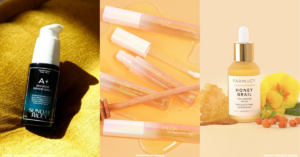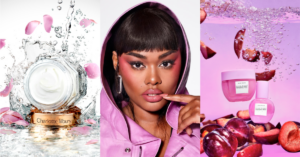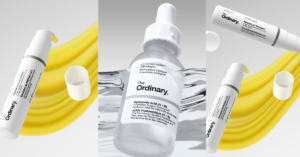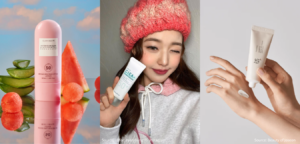Skincare
9 Skincare Mistakes That Are Actually Ruining Your Skin
Are you applying your creams the wrong way, or in the wrong order? Are your expensive jars of creams harboring...
By: Dedet Panabi / January 30, 2020

Are you applying your creams the wrong way, or in the wrong order? Are your expensive jars of creams harboring a tiny colony of bacteria (gross, but true)? These skincare mistakes could be the reason why you’re getting breakouts and irritation.
Contents
- You’re using too many ingredients that peel the skin
- You’re not applying suncreen
- You wash off your cleanser too quickly
- You switch products too quickly
- You don’t wait for skin products to absorb
- You store your skincare products on a bright bathroom counter
- You don’t use clean hands
- You’re stuck in a skincare rut
- You ignore “Period Skin”
You’re using too many ingredients that peel the skin
Some ingredients brighten and rejuvenate the skin by breaking down the top layer. These include acids (like glycolic acid, salicylic acid, and lactic acid), Vitamin C, retinoids and Vitamin A derivatives, and whitening ingredients like papaya extract and hydroquinine.
However, too much exfoliation will make your skin dry, red and irritated. “When people think of over-exfoliation, they believe this applies only to facial scrubs. However, chemical exfoliants are particularly easy to overuse, because they can be found in cleansers, toners and creams,” says California dermatologist Anna Hewitt.

You’re not applying suncreen
We can’t emphasize this enough: sun damage causes 90% of premature ageing. UV rays cause hyperpigmentation, damage collagen and elastin, break down your moisture barrier, and cause free radicals that break down skin cells.
But that’s not all. Many skincare ingredients can make you more sensitive to the sun: retinol, hydroquinine, Vitamin C, benzoyl peroxide, and even some plant extracts and essential oils. If a product irritates your skin, it may be because you’re using it without sunscreen
You wash off your cleanser too quickly
What can any product do if it only stays on your skin for a few seconds? Massage cleanser for 60 seconds, using light circular strokes. Don’t forget to rinse well, too! A lot of the pimples near are hairline are caused by product residue that we didn’t wash off well, that ended up clogging our pores.
You switch products too quickly
Most skincare products need at least 3 to 6 weeks to show significant results. For anti-ageing products, you may need to wait up to 8 weeks. As long as you’re not sensitive to the product – it doesn’t sting, itch, or cause redness or breakouts – try to stick to it to see the effects.

You don’t wait for skin products to absorb
Don’t slathering on layers of toner, essence, serum and cream one after the other. If you don’t give a product a chance to be absorbed by the skin, anything else you put on top will just sit on top of the skin surface.
Apply thin layers, and pat it in before moving onto the next step. Start with the product with the thinnest consistency – say, a watery essence or toner – before applying thicker creams. Some products also need to be warmed up for better absorption. Try rubbing some of your thicker essences between your palms before patting into your skin.
You store your skincare products on a bright bathroom counter
Many skincare ingredients deteriorate when placed under direct heat. Vitamin C is particularly volatile, and will spoil or lose efficiency if it’s not stored in a cool, dark place. You should also be careful with natural or organic skincare products, which don’t have preservatives. If you don’t store them properly, they may not smell off, but they won’t be as effective as promised.

You don’t use clean hands
Bacteria is bad for your skin, and bad for your skincare products too! And these germs really thrive in very rich creams. Some products come with a little spatula – keep it to use with your other skincare products, or buy a spatula in those bargain beauty supply stores.
You’re stuck in a skincare rut
When your skin changes, so should your skincare routine. The cleanser or moisturizer you used in your 20s may not be able to keep up with the collagen loss in your 30s. And if you have adult acne, you can’t just turn to the products you used to fight pimples in your teens. Your skin may be more sensitive, and you need more powerful ingredients to prevent acne marks.
You ignore “Period Skin”
Your skin may also change through your hormonal cycle – yes, “period skin” is real! If you notice you tend to get pimples right before you get your period, then add products that can help control oil or clear out pores. Try a gentle witch hazel toner, or skip the heavy creams and use several layers of hydrating essence instead. These tiny tweaks during That Time of The Month may help control period acne.















